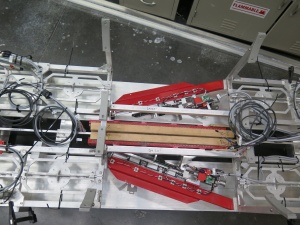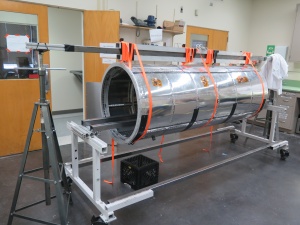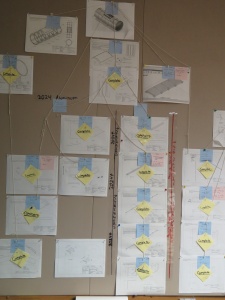How To Manage Trade-Offs In Design
Budgets: It’s Not Just Money That Is Scarce
By Hubert Smits
The Hyperloop, a high-speed transportation system initially proposed by SpaceX and Tesla CEO Elon Musk, is one of the most exciting technological propositions in recent history. To accelerate its development, SpaceX announced an open competition for engineering teams to design their own Hyperloop pods to compete on a test track in 2016. Formed on social media site reddit, rLoop is the only non-student team to reach the final stage of the competition.
Recently, I had the incredible opportunity to work with these dynamic, brilliant and very dedicated volunteers.
The Challenge:
The rLoop team wondered whether all their parts would fit into the available space of the pod. For example, extra batteries would make it easier to design magnets and brakes, but they add weight and take up space. Stronger magnets produce more heat, which is difficult to get rid of in a vacuum. The challenge was how to handle the trade-offs needed in this situation.
The Solution:
My proposal was to treat the scarce resources like money: lay out a budget for the use of a resource. With 100Ah of electricity available for all the power consuming parts inside of the pod, decisions had to be made: 40Ah to levitation, 30Ah to braking, 20Ah to logic, 10Ah to spare.
Just like in your household budget, you can shift allocation. For example, less money for vacation, more for the new car. In the rLoop environment, it may be more power for levitation, less for braking. Some of those trade-offs are needed. The magnets may not be able to lift the weight of the pod, so something has to give (like you give up your vacation when the car breaks down). Others might enable more elaborate solutions. Teams can negotiate and haggle about the use of the budget. Ever done that with your family members?
The trade-offs are more complex than your household budget because different budgets influence each other. For example, the need for more power may dictate bigger batteries, which influences the weight budget. Now negotiating a power budget becomes more difficult: more teams are involved and more factors need to be taken care of.
Just like other reports in Scrum (Burn-down and Burn-up charts), the main goal of managing the budget is to give warnings when a budget is challenged. The Scrum Master can issue the warning and the team has to find a solution.
Here are some photos I took while working with the rLoop team:



Go Deeper
More about rLoop. rLoop is an open-source, crowdsourced, online think tank. Visit their website: www.rloop.org
Burn-down and Burn-up Charts
“The team displays, somewhere on a wall of the project room, a large graph relating the quantity of work remaining (on the vertical axis) and the time elapsed since the start of the project (on the horizontal, showing future as well as past). This constitutes an “information radiator,” provided it is updated regularly. Two variants exist, depending on whether the amount graphed is for the work remaining in the iteration (“sprint burndown”) or more commonly the entire project (“product burndown”).” — AgileAlliance.com


 This quote means that a Scrum Delivery Team not only has design engineers (for electronics and mechanics), but also people who work in the supply chain or manufacturing space. Once those skills and interests are represented during development of a new product, “Twice the Product in Half the Time™” is possible.
I have two examples to share with you:
The first occurred in the
This quote means that a Scrum Delivery Team not only has design engineers (for electronics and mechanics), but also people who work in the supply chain or manufacturing space. Once those skills and interests are represented during development of a new product, “Twice the Product in Half the Time™” is possible.
I have two examples to share with you:
The first occurred in the 








